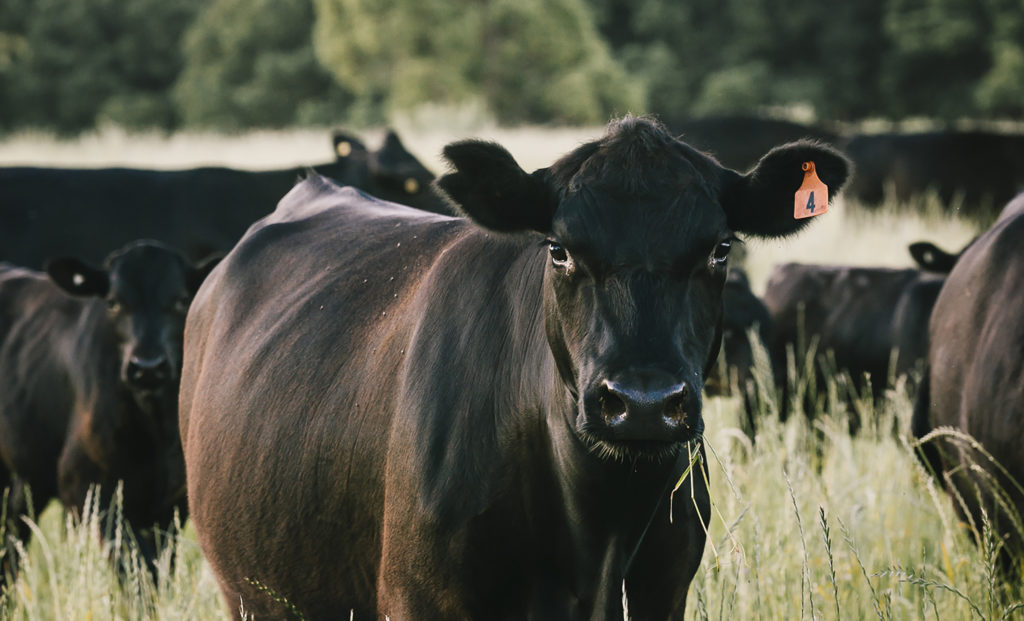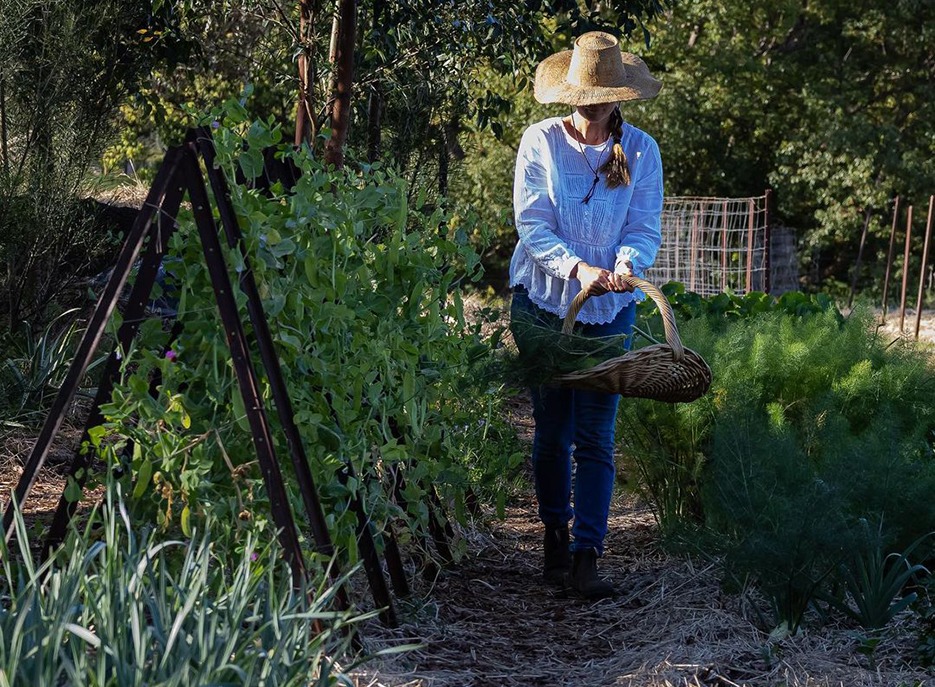Frida’s Field: from farm to table
Frida’s Field is a paddock-to-plate eatery set on a 120-acre farm just 10 minutes from Bangalow in the Byron Bay Hinterland, NSW. It’s owned and operated by Edward Rawlings and Jeanie Wylie. The pair is working to transform their property from a blank canvas into a productive farm using regenerative farming techniques. They manage a small herd of holistically reared Angus-Wagyu cattle, are building a food forest orchard and also have a quarter-acre organic market garden that supplies the farm’s restaurant.
Rawlings and Wylie began their regenerative farming journey over 10 years ago. Through careful study and the advice of other local farmers, they’ve now built a farm that truly represents sustainability and environmental stewardship.
“When we first moved to Byron, we were already interested in producing food organically,” Wylie says. “But we took our time figuring out what to do with the land. This is obviously a very progressive part of Australia. And so, by linking up with different farming groups and doing research, that’s what gave us exposure to regenerative farming.”

Not all beef is equal
Frida’s Field now has a herd of around 50 Angus-Wagyu cattle. To help improve the health of the soil, and to reduce the farm’s carbon emissions, the couple uses rotational cell grazing. This involves moving the cattle between 16 different paddocks every few days.
“If you let cows go wherever they want, they’ll go for their favourite grasses first,” Wylie explains. “They’ll eat them all the way down, which exposes the soil. As soon as there’s bare soil, that starts releasing carbon instead of taking it in. We want to ensure that the soil is always covered. Also, by moving cattle, they mulch the land without creating bare soil. They’re pooing. They’re trampling grass. And the grass is able to grow more, because we let it rest. All of this is almost like throwing hay and fertiliser over the paddocks.”
Rawlings and Wylie have also seeded 40 acres with a mixture of eight different pastures. This increases biodiversity and also gives the cattle a more diverse diet.
“We understand there’s a lot of controversy about the environmental impact of beef production,” Wylie says. “But we also know that not all beef is equal. Grass-fed and finished beef that’s raised with low-density stocking rates using rotational cell grazing is completely different to mass-produced grain-fed feedlot beef.”

Working with nature
The farm’s market garden supplies the restaurant with fresh produce. In turn, restaurant food scraps are composted to feed the garden’s soil. The couple has tried growing a variety of different crops, but this year, the plan is to focus on just a few.
“We’ve found with trying to supply the restaurant that it’s challenging to have little bits of lots of different things,” Wylie says. “If we really want to get better at delivering a true paddock-to-plate experience, we need to decrease the diversification of the market garden. Instead, we want to try and get really good at growing fewer crops. That way, we can say, ‘All the carrots for this menu are ours’. But it’s definitely a work in progress.”
The food forest is also a work in progress. Wylie describes it as a “mixed diversified orchard”. Along with food trees, there are forest trees, timber trees and other trees and plants specifically planted for biomass. These are pruned and mulched regularly, using the “chop and drop” technique. This creates carbon-sequestering, fertile soil.
“It’s basically growing mulch in situ,” Wylie says. “For example, we put in these fast-growing gum trees. When they get to a certain stage, we start chopping branches off. We put that on the ground underneath the tree and it breaks down. It’s copying what happens in a natural forest. Microorganisms start breaking down those branches, which feeds the soil.”

A celebration of nose-to-tail eating
Frida’s Field holds three long lunches each week, on Fridays, Saturdays and Sundays. The lunches are curated by award-winning chef Alastair Waddell. Over the last weekend in March, Frida’s Field will pay homage to its cattle by hosting a nose-to-tail beef celebration. The weekend will include a “forage and harvest” farm tour. There will also be a hands-on introduction to seam butchery and nose-to-tail cooking demos in the restaurant kitchen.
The workshop will introduce guests to lesser-known cuts of beef; the kind you don’t usually see when an animal is butchered commercially. These will be grilled on the spot and served with locally sourced wines and beers. Waddell will also explain how to create dishes that utilise the whole animal, including offal such as beef tongue, tripe and kidney.
Guests can then return the next day to experience nose-to-tail dining at its finest. Waddell will be curating a five-course nose-to-tail long lunch using Frida’s Field Angus-Wagyu beef.
“We’re extremely proud of the time and energy we put into managing our beef,” Wylie says. ‘We know it translates into better quality meat. We’re hosting this event so people can taste the difference, and to help them be more conscious of where their meat comes from. We also want to get people excited about minimising food waste by using the whole beast.”
For more information on Frida’s Field or to book your spot at the nose-to-tail celebration workshop and long lunch, head to the website.









